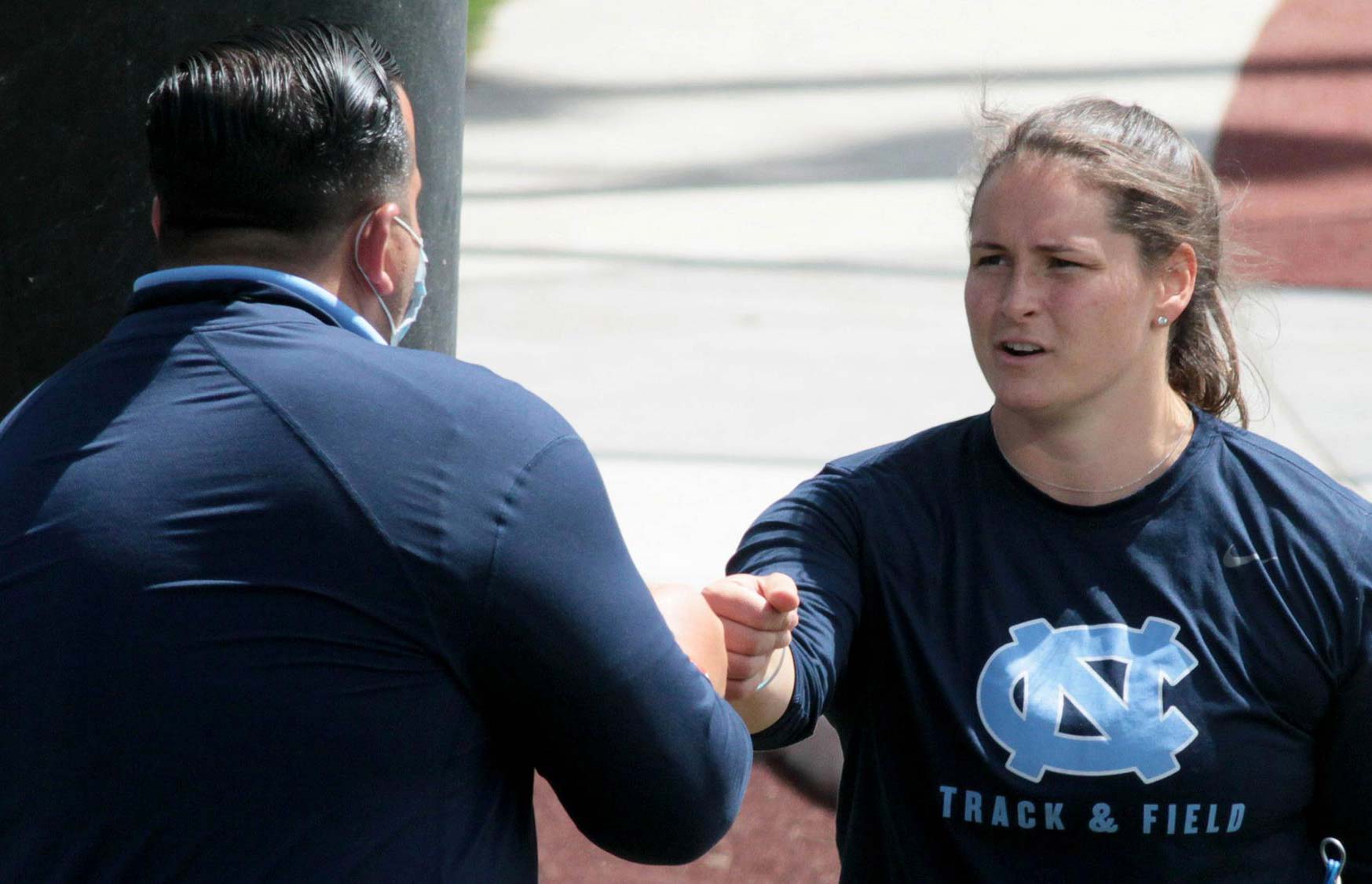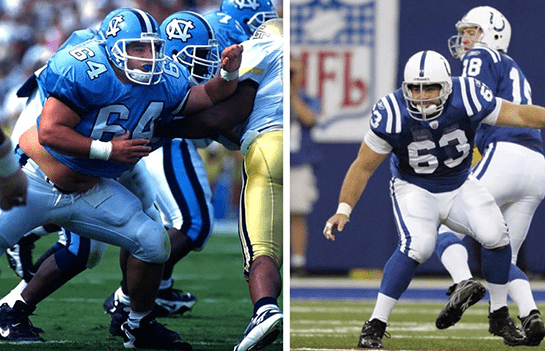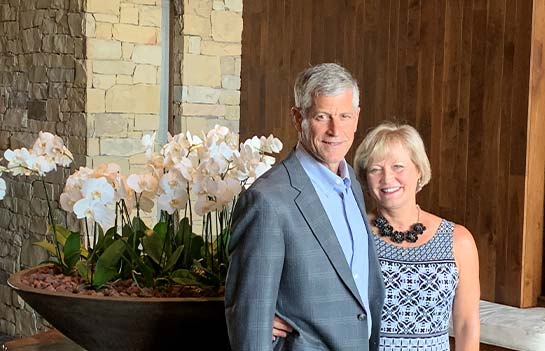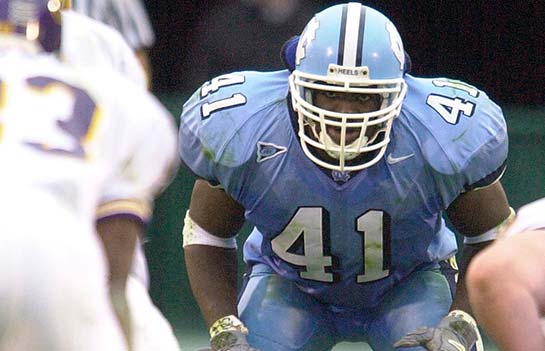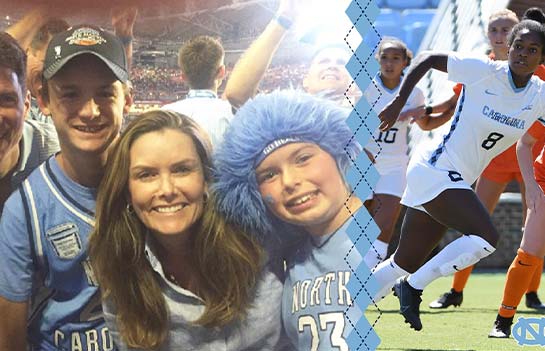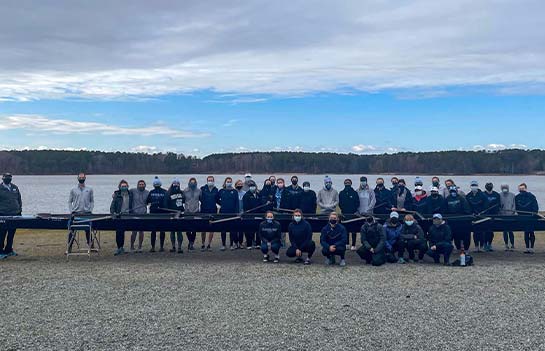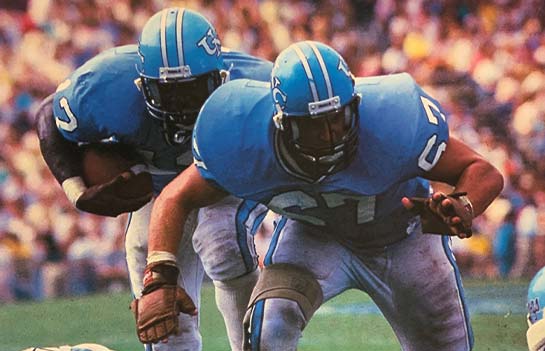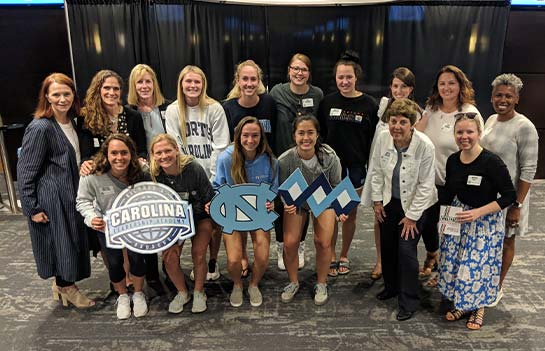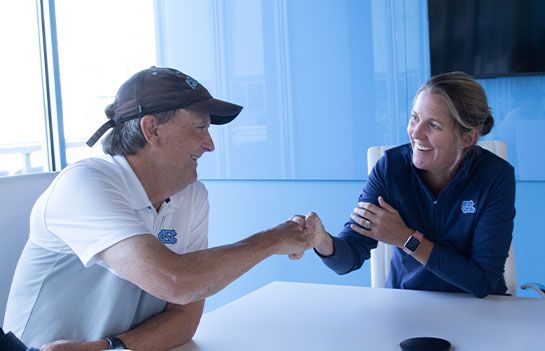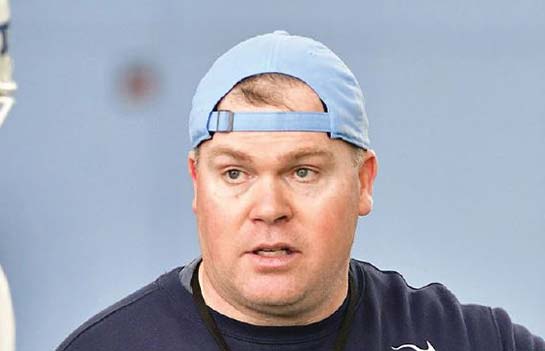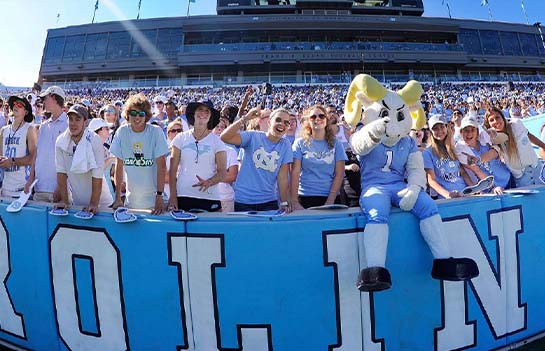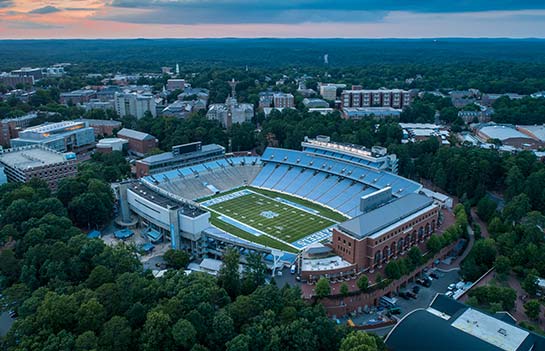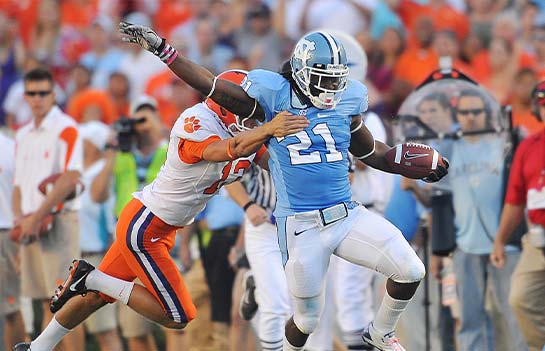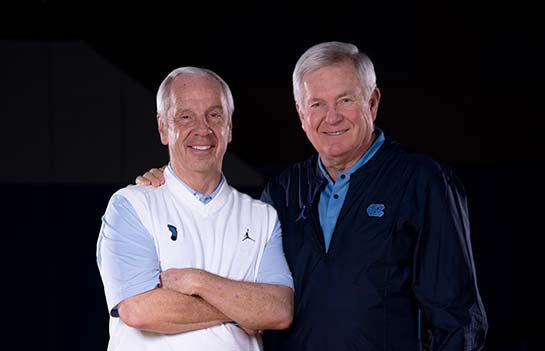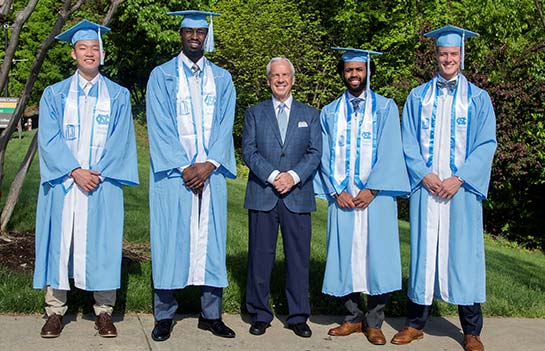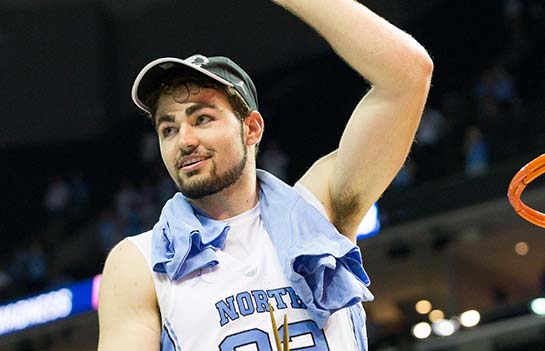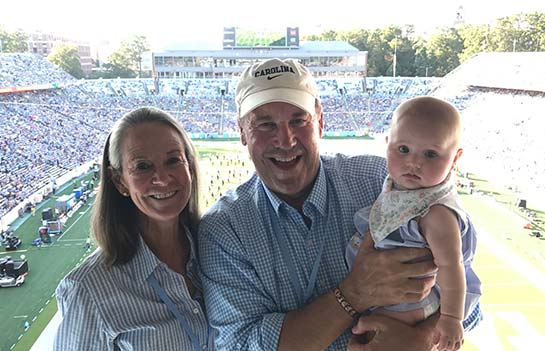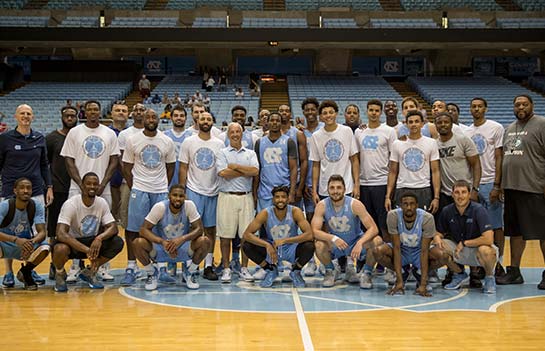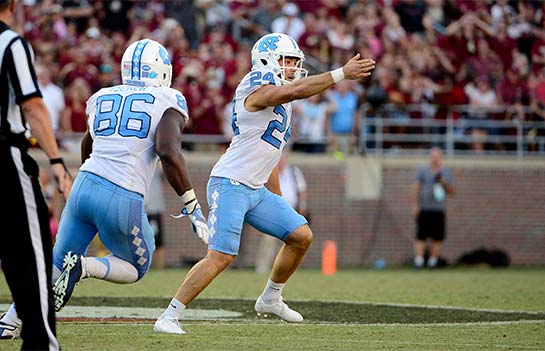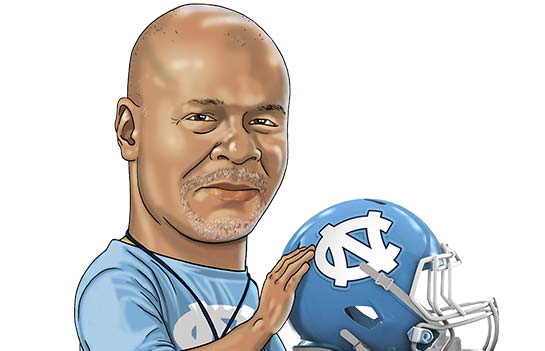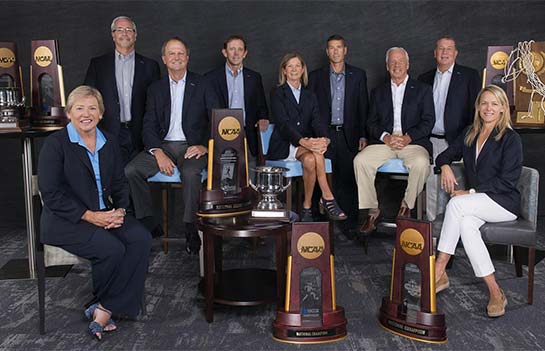THE MORE THINGS CHANGE
Mack Brown Hopes To Use Some of the Same Principles That Worked in His First Stint at Carolina, but Expect Plenty of Updates
by Adam Lucas
Everyone involved hopes Mack Brown’s second tenure as North Carolina’s head coach has very similar results to his first stint, when he propelled the Tar Heels to the national top ten and the cusp of competing for a national title.
But in the blitz of nostalgia and enjoyable throwbacks to some of the best Carolina football teams that have ever played at Kenan Stadium, it’s also worth remembering one other key factor: this isn’t the same Mack Brown.
We shouldn’t expect it to be. After all, 1996 and 1997 are over 20 years ago. Are you the same as you were twenty years ago? Probably not – and neither is Mack Brown. He still possesses many of the same characteristics that helped him dominate the state of North Carolina. But he also has 16 seasons of experience at Texas, followed by five years of experience with ESPN that allowed him access to programs across the country.
He didn’t just stop working at Carolina and go sit on a beach somewhere. He’s been in the game of football, and his decisions in the first few months of his Chapel Hill reprise have illustrated his feel not just for college football, but for college football in the year 2019.
1) UNDERSTANDING WHAT WORKS
Brown’s ESPN access introduced him to eventual Carolina defensive coordinator Jay Bateman. And his seat in the ESPN studio allowed him access every Saturday to assess what was working offensively across the country.
It’s easy to forget that the freewheeling, put-up-45-points-on- Clemson offenses of the last couple of years of the first Brown era bore very little resemblance to the early Brown offenses. Those offenses, which worked best when they were under the direction of Jason Stanicek, were option-heavy.
But Brown felt he needed to modernize the attack, which led to the is-this-really-happening 45-0 demolition of Clemson in the 1996 season opener. He’s taken a similar approach to building the 2019 team, installing not necessarily his personal preference for an offense and defense, but what he believes works best in today’s college football.
“The Air Raid is the best offense that’s out there right now,” Brown says. “What happened with Lincoln Riley at Oklahoma, what happened with Phil Longo at Ole Miss, is they’ve taken the Air Raid concepts of spreading people out, but they’re running the football. They have two backs or in a lot of cases a tight end. It’s still the old power running game. I love the combination of both. We will still be a prominent power running team that will also throw the ball. In the Air Raid offense, they throw it deep.”
2) A DESIRE TO OWN THE STATE
Brown began talking about the state of North Carolina in his introductory press conference and hasn’t stopped since. He and his staff – which includes some of those recruits who chose to play for Carolina in the first Brown iteration, making them the best possible spokesmen for how that choice positively impacted their lives – haven’t yet had a full recruiting cycle, but they’ve made it plenty clear that they want Carolina to be the destination school for in-state prospects.
“When we left, we were recruiting as well as anybody in the country,” Brown said. “We were getting most of the guys we wanted out of the state of North Carolina, some out of Virginia, some out of South Carolina and Georgia. We were really on a roll.”
It’s not just recruiting. Remember, Brown is the same coach who talked extensively about winning the state championship. There will not be any question about whether he understands the importance of annual games against Duke and NC State.
FACILITIES
Brown was never really able to fully enjoy the Kenan Football Center that was completed in 1997 and would have been the crown jewel of his first tenure. How long ago was that? None of the players he’s recruiting now were born when the building opened.
It took Brown less than nine months on the job to make tangible changes to the Carolina football facility blueprint. Those include some improvements in areas that weren’t even considered in 1997 – no one had a Gatorade fueling station, for example. But he’s not finished. Making physical improvements is a win-win for a head football coach because it impresses recruits, and it shows current players that they matter. Those are two fundamental goals for every coach, so expect to hear more about facilities in the months and years to come.
4) PEOPLE
Some of the people are, quite literally, the same. Brown is the most obvious example, but as was detailed in the last edition of Born & Bred, he’s also sought advice in some form or fashion from longtime aides Ken Browning and Darrell Moody.
What makes Brown so good, though, is his ability to understand how to adapt his personnel to the times. So you might see Browning around the football office. But you also might see director of football recruiting Billy High, who was in elementary school when Brown was fielding his most formidable Carolina teams.
The next step with personnel will be a tougher one: keeping them together. One of Brown’s most underrated assets at Carolina was his ability to foster staff continuity. The Tar Heels’ recent coaching staffs have had constant change. It’s a simple reality that if Carolina is as successful as they want to be in 2019, their coaches will be highly sought-after. It’s expensive to keep a major college football staff together.
5) FANATICAL ATTENTION TO DETAIL
This probably seems simple, but it’s been extremely noticeable in the last few months. First, of course, is Brown himself. When he is engaged in a conversation, he is completely engaged. He’s not checking his watch. He’s not looking past you to see who else might be walking by. He’s there, present, with the person to whom he’s talking. It’s what makes him so tremendously good in living rooms.
But it also extends to the rest of the program, even in ways that many fans will never see. Significant thought was given to the graphics inside the Kenan Football Center and what messages were being portrayed in different areas of the building. Staff meetings begin with a highly detailed plan for the day.
But Brown isn’t so bogged down in the details that he misses the macro topics. He quickly identified one problem with the Tar Heels in recent seasons: “We had too many guys hurt.” How many times did you shake your head about this exact subject in recent years? The new head coach immediately identified that problem, then set out to fix it.
Like the rest of the program, final results won’t be known instantaneously. But Brown is using enough pillars that have worked before – while updating them to make sure they’re modern and not musty – that there’s reason to hope again in Chapel Hill.
More Stories
The impact of giving comes through in wonderful stories about Carolina student-athletes and coaches, as well as the donors who make their opportunities possible. Learn more about the life-changing impact you can have on a fellow Tar Heel through one of the features included here:
